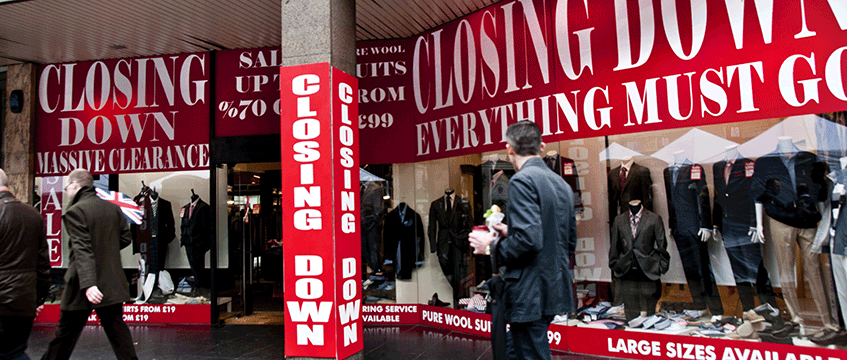There’s nothing like a Budget to distract people from Brexit. The distraction, however, was somewhat fleeting as it emerged that the sweeteners unveiled wouldn’t be handed out under a “no deal” scenario, writes David Atkins, chief executive of Hammerson.
With the well-documented retail failures that have hit the news during 2018, this would have been the perfect moment for the chancellor to announce that the government would be taking stock and undertaking a wholesale review of business rates – a system that hasn’t kept pace with changing consumer behaviour and one which significantly impedes retailers with physical stores.
This is a time when major structural shifts are pushing an increasing number of retail business models to the brink. Put simply, the system is arcane, outdated and unjust.
I applaud the support to small and independent businesses, who are no doubt breathing a sigh of relief, but for larger retailers, there is little to feel good about.
The sector has witnessed more than 30 CVAs involving retailers and restaurant chains since the last business rate revaluation in 2017. It’s hard to reconcile that not one of the stores involved would have benefited from yesterday’s proposed reforms.
Stark reality
The reality is pretty stark: while the proposed rates relief will assist the majority of small retailers, this leaves the larger players to cough up more than two-thirds of the total rates paid, as they remain largely ignored by the Treasury, receiving no additional support.
The nation mourns when a major retail brand departs the high street for good – but I’m not sure what it’s going to take to remind everyone of the importance that retail plays in our livelihoods. An employer of more than 3m people, a major contributor to pension pots and an even bigger contributor to the vibrancy of towns and cities across the UK, retail has a positive impact that is real and significant.
This is why it is in everyone’s interest that larger retailers are also given the chance to prosper by operating on a level playing field and addressing the imbalance in the tax system between established physical retailers, and pure-play and online businesses.
Business rates represent 2.3% of physical store turnover and just 0.6% from an online player. The digital tax is a step in the right direction and at least recognises the disparity that currently exists, but we had a real opportunity to take a more far-reaching look at the sector.
The Budget announcement signalled that up to £400m could be raised from a digital tax. This is mildly ironic given the same figure is being used to help improve potholes on UK roads. I don’t think it’s unreasonable for me to suggest that delivery vehicles from both online and multichannel retailers are a prominent contributor towards wear and tear on our roads.
The nation mourns when a major retail brand departs the high street for good – but I’m not sure what it’s going to take to remind everyone of the importance that retail plays in our livelihoods
A delivery levy is something that seems to have been side-stepped in this debate, but it is one that ticks a lot of boxes. Firstly, it has become all too easy for all of us to click from our phones and press buy without giving it a second thought. With retailers vying for market share, the competition to offer free delivery and returns means multiple orders can arrive on an hourly basis.
A delivery levy, charged to the consumer for each purchase, would cause a change in shopper mind-set which I suspect would result in consumers aggregating purchases – or collecting more in store.
Secondly, the reduction in emissions surely has to be something that we should all consider – reducing plastic packaging in the delivery process has been widely championed and this is a logical follow-up.
I’m not in any way saying that we should go back in time. Online retail delivers a convenience that none of us would want taken away. Its ascendency has played a major role in giving some of our favourite brands’ business models a boost.
Bold steps needed
However, we need to take bold steps. Shoppers are willing to go with change if they understand it has a beneficial impact on the planet and on the cities and towns in which they live. Some big retail brands don’t have the luxury of time; a review of rates in the next parliament will be too late as more than 2,100 stores have already closed this year.
“Fit for the future” was a phrase used yesterday – if our high streets and retail brands want to be truly fit, there needs to be a real recognition of the role retail plays and that greater parity is needed. Fighting-fit retail brands are what we all want to see – they just need to be allowed to compete on a level playing field.











